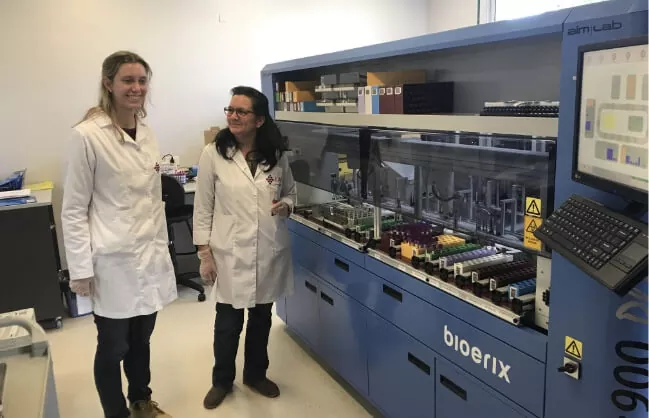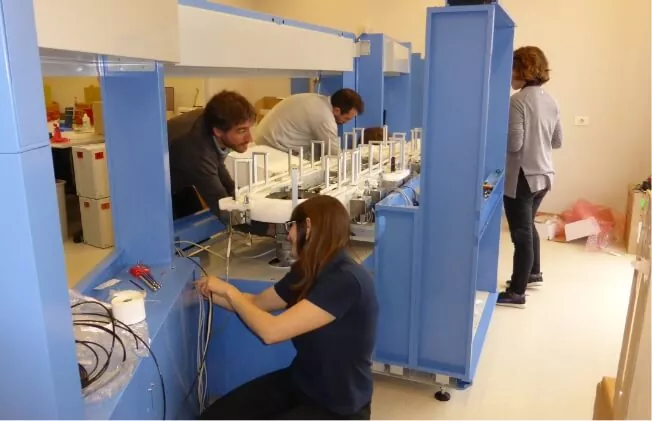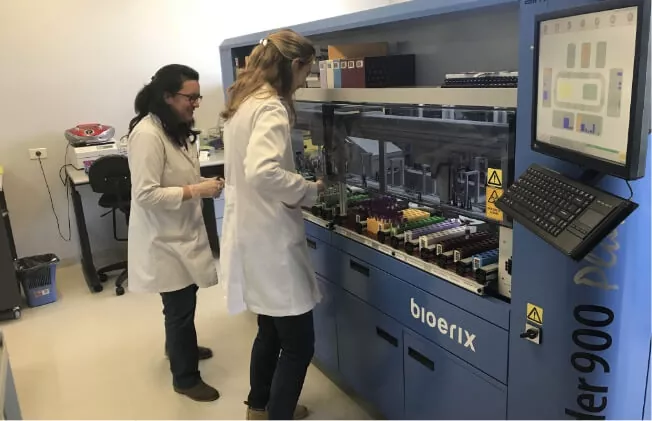Adding Value Through Automation – Laboratorio de Análisis Clínicos
Laboratorio de Análisis Clínicos or LAC – located in beautiful Montevideo, Uruguay, strives to “add value through automation.” The laboratory is committed to achieving exemplary performance and is the first ISO 15189 accredited lab in Uruguay.
Receiving more than 700 tubes per day to be processed, LAC replaced their manual tube handling and handheld bar code scanners with Brooks’ robotic workstation, the PathFinder 900 Plus (or PF900). It has become a valuable new team member, optimising pre- and post-analytical tube handling. They have also installed a PathFinder 350A Archiver (PF350A) as a back-up.
With a throughput of over 750,000 tests each year, LAC were looking to automate sample tube handling and optimise their pre- and post-analytical phases. They decided on installing a PF900 and a PF350A robotic workstation in their laboratory. The PathFinders were installed in mid 2016 and the instruments were in full service within a week.
Director, Dr. Milton Fornella, commented that “Advanced planning with the Brooks team and Bioerix, the local distributor, was one of the keys to our success”.
Dr. Fornella has been delighted with the new PathFinder instruments to date. “The PF900 has proved to be an instrument of excellent performance and robustness”, he said. What has been particularly pleasing is the fact that the PF900 has not shut down once in its first 12 months of operation.
Typical Handling of Tubes
The incoming sample tubes (EDTA, citrate, serum) mostly arrive in two batches during the day and the PathFinder 900 Plus easily copes with these peak workloads. The PathFinder 900 distributes the incoming tubes into their respective analyser racks, ready for testing. After testing is complete, it then organises these tubes for further testing or storage. So, for example, the serum tubes are decapped and sorted directly into one of several Architect rack destinations corresponding to the analysers in the chemistry lab (2 x ci8200, 1 x i2000). After the serum tubes have been processed by the Architects, they are re-loaded onto the PF900 for subsequent sorting. If further testing is required, they are sent to the next highest priority destination rack or, if there are no pending tests, they are archived in 128-well PathFinder racks for storage at -20 deg C.
In addition, the PF900’s capability for aliquoting specimen into labelled secondary tubes also really adds value to the operations.
Meeting the Lab’s Efficiency Objectives
Besides optimising the pre/post-analytical phases, the PF900’s use has meant less mistakes classifying the tubes and a reduction in pre-analytic operation time. Saving around 1½ hours in time in comparison to manual processing, the PF900 workstation ensures the tubes are ready sooner for introduction onto their main analytic platforms. In fact, the new system has reduced the analytical phase by approximately 90-120 minutes (for the noon shift) and 60 minutes (for the evening shift).
Another key to improving efficiency is the new interface between the lab’s LIS and the PathFinders. This has enabled the lab to standardise the way the various tubes are handled in the lab, which in turn streamlines the process.
The operators of the PathFinders have embraced the new instruments, being the first to recognise the benefits of automation.
“Not only do they classify tubes in a much more efficient way, the distribution of the workload has become much simpler and clearer. This has made all our instrument operators optimize their tasks (Analytical Phase) so that they can deliver results in less time to those responsible for generating results reports (Post-Analytical Phase). Briefly, we are all happier today.”
Cost Savings Not the Only Benefit
While cost savings can be difficult to quantify, the decrease in costs is “clearly reflected in the total human resources (time and costs) that we allocate to the pre and post-analytical phases”. In addition, the lab now has capacity to grow and receive more tubes in the future.
Dr. Fornella said that quality in handling, locating and tracing the tubes has been much improved since installation of the PF900. But the LAC Director noted that while lower costs and improvement in efficiency are very important in the day-to-day operation of the lab, the overriding objective is offering the best care for their patients.



